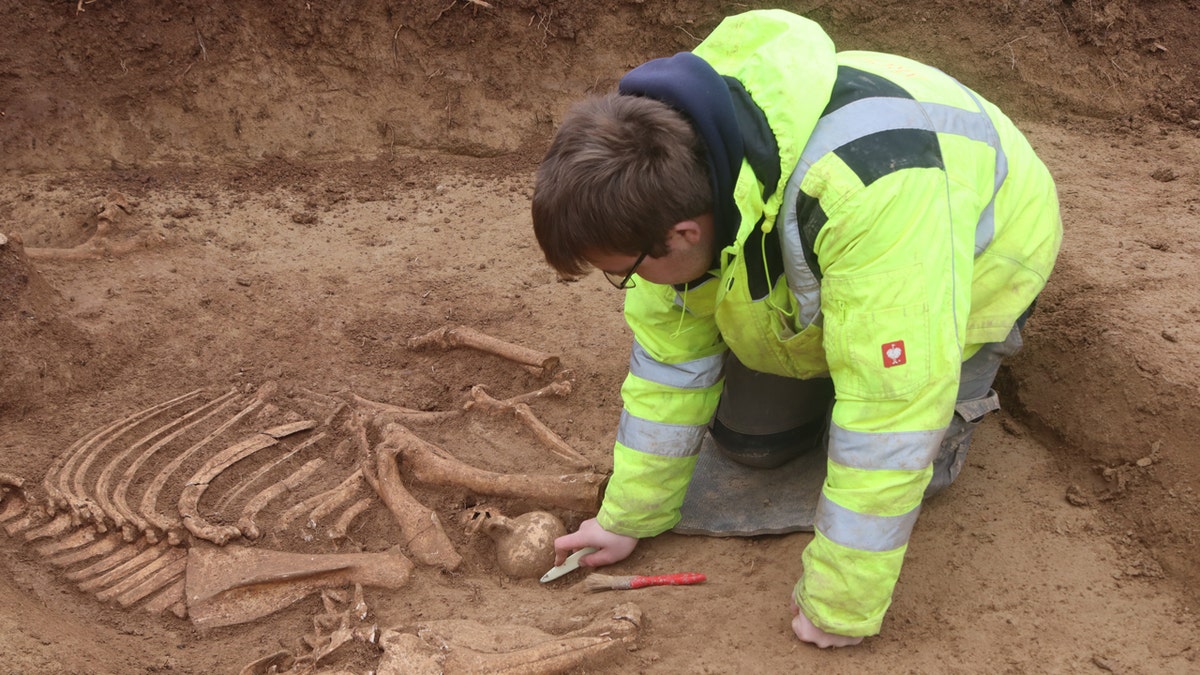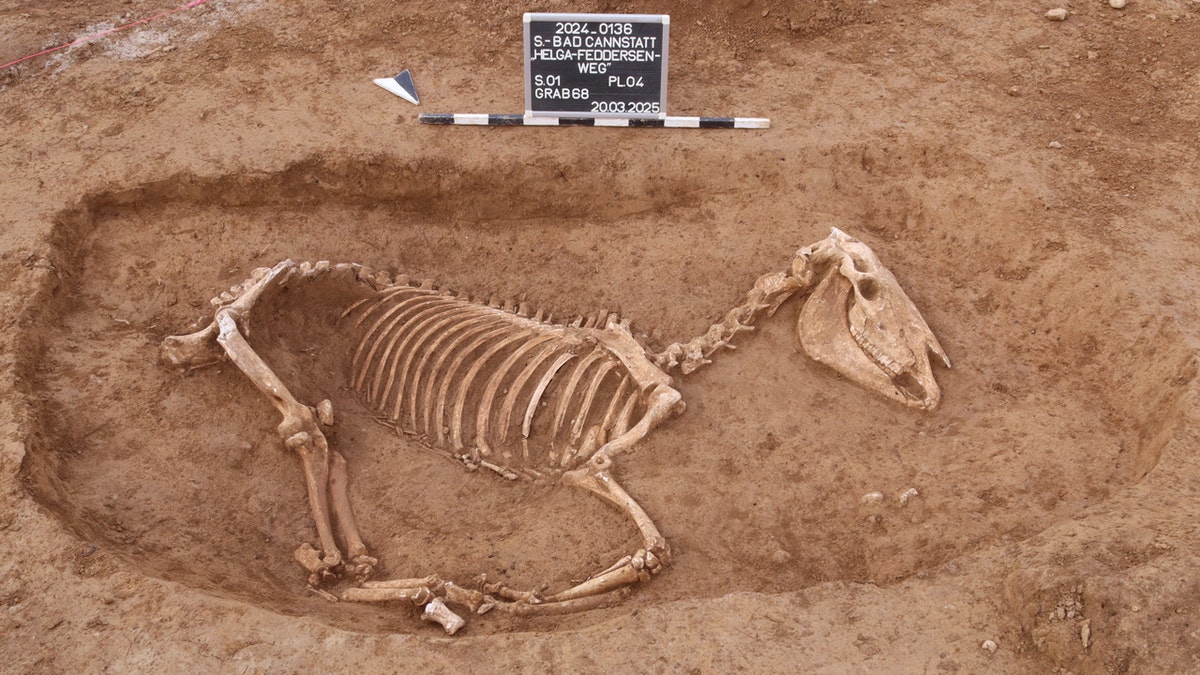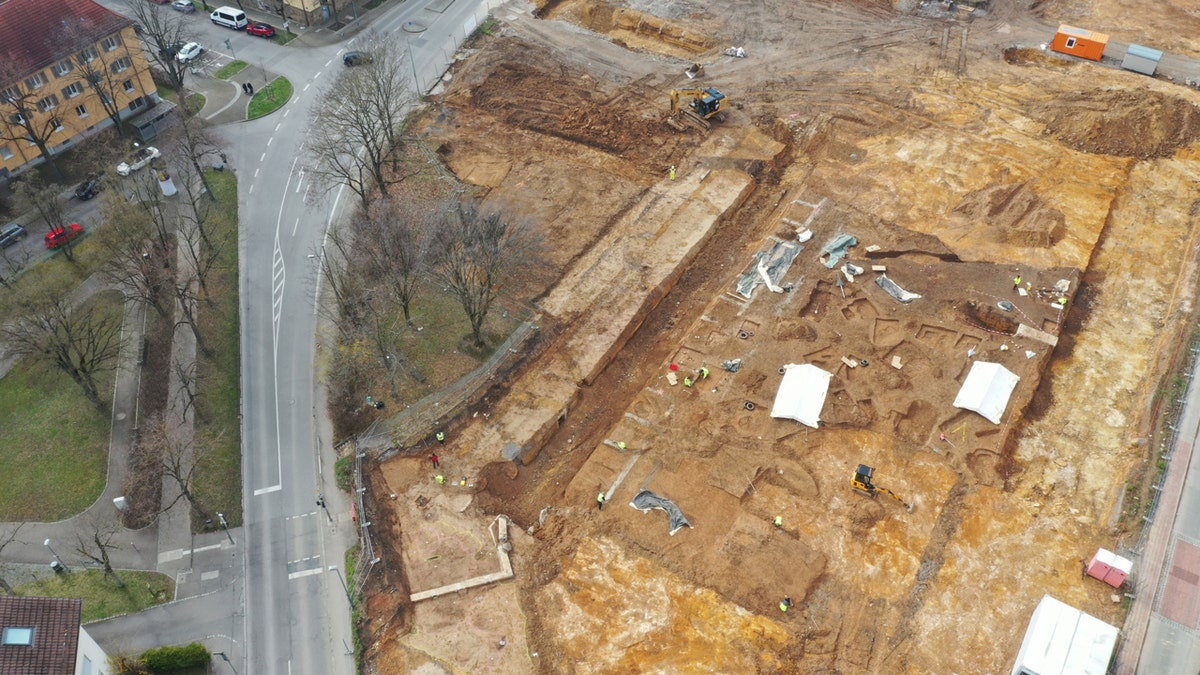Archaeologists recently announced the discovery of over 100 buried horses dating back to ancient Rome – but the skeletons weren’t found in Italy.
The excavation took place at Bad Cannstatt, a borough in southwestern Germany, said an April 16 press release from the Baden-Württemberg State Office for Monument Preservation (LAD).
The statement, translated from German to English, noted the town was one of the region’s “most important Roman military sites” in ancient times. A cavalry unit there boasted around 700 horses at its peak.
HISTORIC MARYLAND CHURCH OPENS DOORS TO VISITORS 320 YEARS AFTER CLOSING DOWN
Pictures from the site show horse skeletons buried in the soil as excavators worked to clear them.
The excavation began last July, spurred by recent construction projects that “necessitated archaeological investigations,” according to LAD.

Archaeologists discovered over 100 horse skeletons at the German site. The scientists believe the horses were brought there over time as opposed to dying in a single battle. (State Office for Monument Preservation in the Stuttgart Regional Council/ArchaeoBW.)
Experts say the remains are just under 2,000 years old, dating back to the second century A.D.
“The first horse bones discovered were dated to the second century using the radiocarbon method,” said Sarah Roth, an archaeologist at LAD.
“Based on the archaeological and historical knowledge of Roman Bad Cannstatt, the horses can be attributed to the cavalry unit – a so-called ‘Ala’ – stationed at Hallschlag from around 100 to 150 AD.”
She also noted that “the troop of nearly 500 riders likely had a total horse stock of at least 700 animals, with losses needing constant replacement.”
The horses were buried roughly a quarter of a mile away from the cavalry fort and one-eighth of a mile away from civilian residences.
“The carcasses were usually dragged individually into shallow pits, where they were buried lying on their side with legs extended or bent,” LAD explained in the statement.
“The site was likely marked above ground. Despite a sometimes dense arrangement, there were few overlaps of the pits.”

The horse remains discovered by archaeologists date back to the second century A.D. (State Office for Monument Preservation in the Stuttgart Regional Council/ArchaeoBW)
Roth added that the horses did not appear to die during a single event, such as a battle.
Rather, the animals were probably ill or injured when they were buried, or may have been otherwise unfit for military service.
For more Lifestyle articles, visit foxnews.com/lifestyle
“If the horse could still walk, it would have been brought to the horse cemetery and killed on site to avoid transporting the heavy carcass,” she said.
Archaeologists believe the cemetery site was more extensive than the construction site itself, but its exact size is unknown.
There have been several ancient Roman grave discoveries in the past year.
Interestingly, some horses were buried together with items, perhaps as tokens for the journey to the afterlife.
One animal was found with two jugs and a small oil lamp, and the items were “placed in the crook of its arm as a farewell.”
CLICK HERE TO SIGN UP FOR OUR LIFESTYLE NEWSLETTER
“Here we see a particularly close bond between the owner and his horse,” Roth said. “Even after around 1800 years, the grief over the death of this one animal is still evident.”
There have been several ancient Roman grave discoveries in the past year.

The dig took place at Bad Cannstatt, a borough in southwestern Germany. (State Office for Monument Preservation in the Stuttgart Regional Council/ArchaeoBW)
In Vienna, Austria, archaeologists recently uncovered a mass grave containing the remains of Roman soldiers and Germanic tribesmen under a soccer field.
Earlier this year, a remarkably well-preserved dog was found at an ancient Roman site in Belgium, highlighting the prevalence of animal sacrifice in antiquity.
CLICK HERE TO GET THE FOX NEWS APP
Fox News Digital’s Ashlyn Messier contributed to this report.




